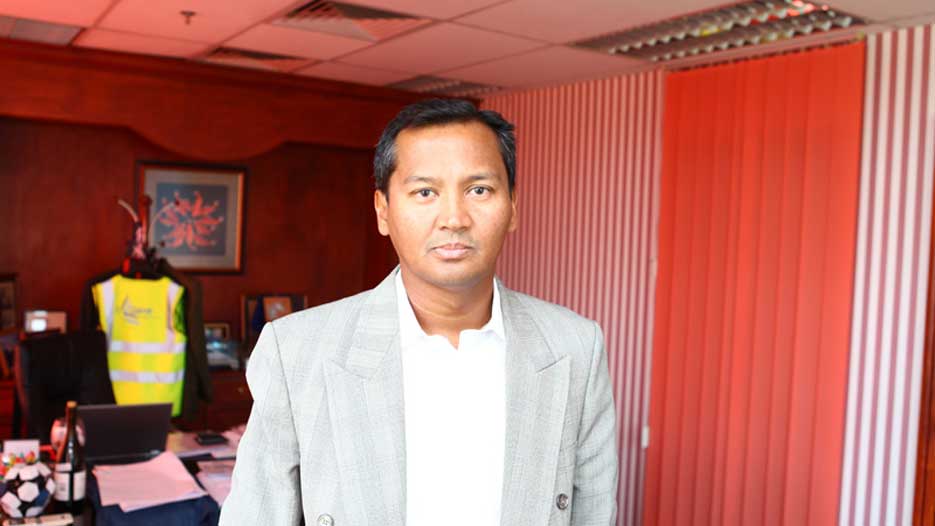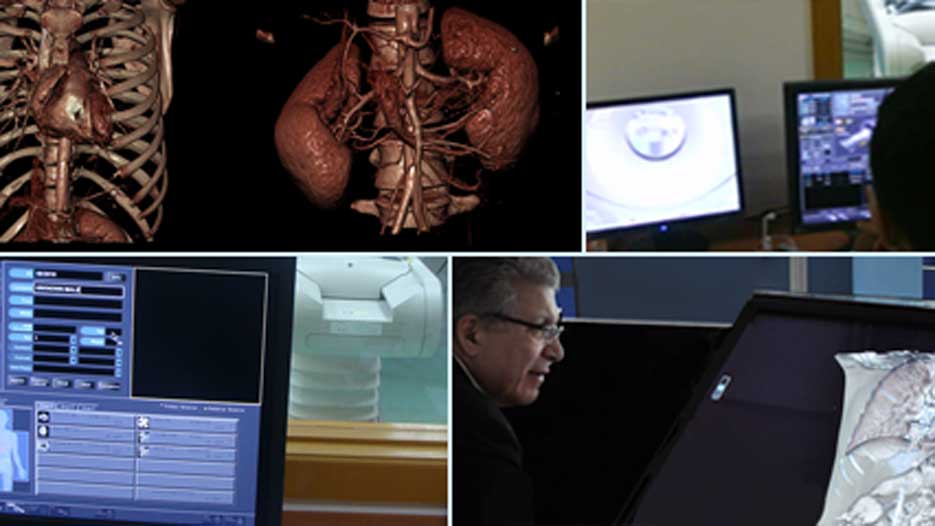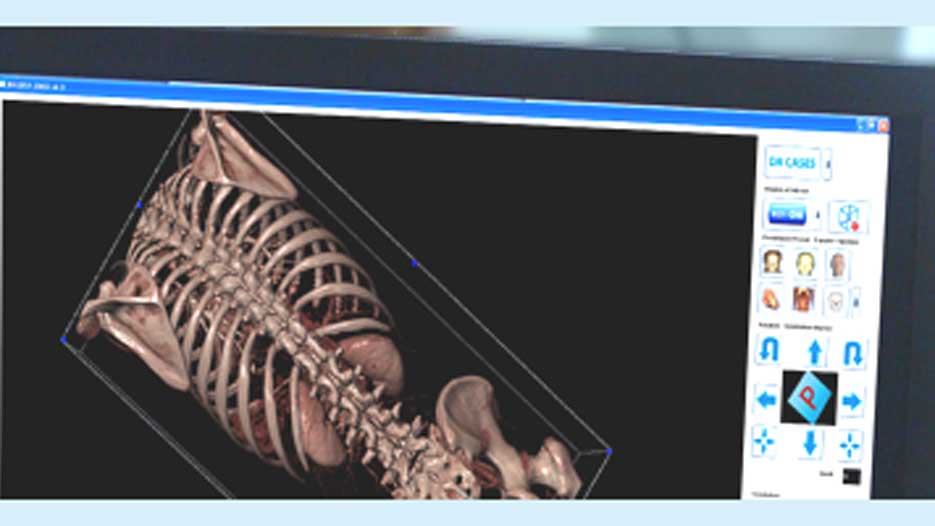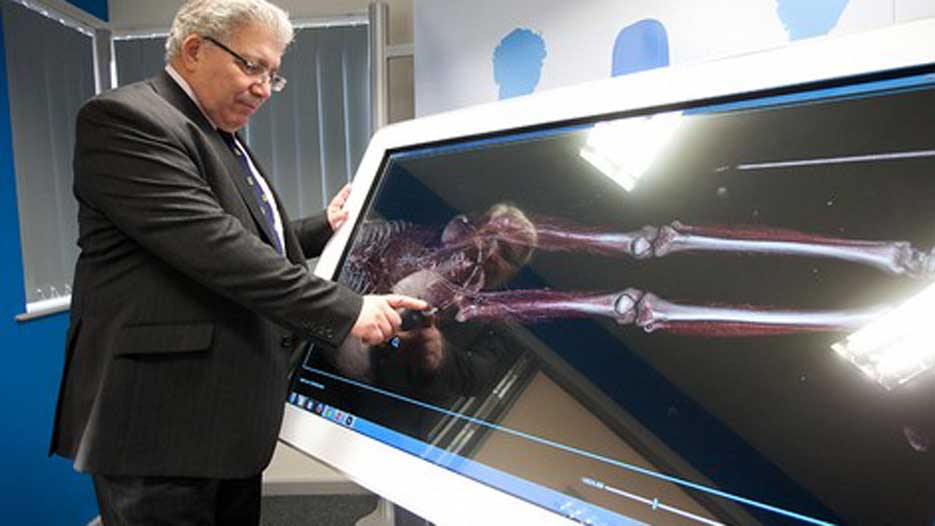Malaysian Innovation Going Global: Digital Autopsy
The innovation is very abstract. It is a state of mind; a better question would be that how people perceive innovation and how they enjoy the excitement and the value created by innovation. In that sense, from the political leadership to the business community in Malaysia, we are very excited about the possibility of innovation.
Interview with Mathavan A. Chandran, CEO of Infovalley Group of Companies

To start with, are you fully satisfied with the level of innovation and competitiveness of Malaysian companies?
The innovation is very abstract. It is a state of mind; a better question would be that how people perceive innovation and how they enjoy the excitement and the value created by innovation. In that sense, from the political leadership to the business community in Malaysia, we are very excited about the possibility of innovation.
How do you see the relationship between the public sector and the private sector? Very often public sector has been hindrance towards anything new, new technologies and innovation. How is the situation in Malaysia?
It is quite the same when you benchmark that against the global state of affairs. There is nothing so unique about Malaysia. Naturally, the public sector is not fully aware of the benefits that innovation can provide to a country or to communities or even to individuals who operate within the public sector. Therefore, the innovators are primarily driven by the private sector and most importantly from the small or the entrepreneurial community of this country and when I compare that against the global landscape, it is identical.
I would like to see, from the political leadership, the removal of the fortress that is being built around the public sector and making public sector a lot more accessible to this innovative entrepreneurial community. This change can hopefully increase the efficiency, change the way the public sector has been serving the public, and I am more than convinced that it is a task that can be done with a proper support and leadership in place.
How does Malaysia compare to other neighboring countries like Indonesia or Singapore when it comes to innovation?
We are very excited about innovation and we have put in many plans in place to spur innovation, to embrace innovation and try to be as innovative as we can. Most importantly to make innovation as part of our common glossary within the society and we are looking at these youngster groups, we are also looking at education system. In that sense, the innovation is a very big topic.

This revolutionary new technology has been created by advanced medical visualization company iGene Sdn. Bhd., part of the Malaysian INFOVALLEY group. iGene is investing £50m in a network of Digital Autopsy facilities across England and Wales in the next couple of years.
Please present shortly the Infovalley Group of Companies.
Infovalley Group of Companies was formed in 2000. The idea behind this was to provide a platform for innovative and exciting ideas within the life sciences sector to be incubated and eventually nurture that into impactful commercial activities.
After number of possibilities that were incubating or simmering under the Infovalley brand we had two initiatives that had gone into full commercialization.
The first one within the biotechnology sector. Is a place, where we fabricate and roll out services for very complex, genetic conditions or diseases such as cancer and cardiovascular diseases. We aim to provide services to clinicians from around the world under the concept, which is called a molecules screening. Essentially, it is about doing an analysis of target points at the genome of a person and map that to the clinical condition of the person at that point of time. Later, to provide the report to the clinicians who are attending the patient to understand the basis to the clinical symptoms or conditions that they are looking at. Lastly, to bring on the depth form the molecular perspective.
The second initiative is called the digital autopsy initiative, which seems to catch the imagination of the world. Digital autopsy is a new concept whereby an investigating pathologist or medical officer could use the power of imaging and visualization to conduct post mortem examination on the digital body of the person rather than doing the typical physical dissection of the diseased body to make observation. Then to determine the cause of death.
Looking into the future, what are your plans, some of the exciting projects you are working on?
We have a number of other exciting initiatives that we are looking at. The first relates to using the platform technologies that we have built for the digital autopsy. We are looking at the possibility of creating a new application and an ecosystem that can be used to do the overall health management of horses.
As you know horses are expensive animals and many functions and commercial activities are built around the them. Today, in our observation the kind of tools and methods that is used to ascertain the condition of the horse and to manage the performance of the horse are still lagging in terms of its objectivity and the power of such diagnosis.
Therefore, what we are trying to do here is that we can use the full body visualization of a horse and bring about various functionalities that can be used by the expecting veterinarians to ascertain the conditions of a horse for competition or after competition and also during the purchasing stage of a horse by the owners.
In addition to that, we are also looking at what is the possibility of re-inventing the way a typical radiology unit has been functioning within the hospital. At the current scenario, every hospital has a department or a unique radiology department where a patient walks into the radiology department, gets a few images done and wait for the clinical consultations.
What we are looking at here is a transformation or migration. Can we distract the completely conventional radiology type of practice into what is perceived to be more distributed and more handheld mobile devices based visual technologies. For example, the clinician gets the full access to the full body dataset in high definition visuals in their hand held devices. It gives all the possibilities to make various examinations via handheld devices.

Can you talk a little bit about your structure or any special department do you have?
There is nothing unique about us. Like many creative companies, we have low level of structuring. We call ourselves a molecular structure, which is an aggregation of a few people that interacts together about possibilities. Part of the team are one or two disruptors throwing some ideas; typically of one would think of a blue sky or crazy things. Then we talk that through, put a very small team of 2-3 persons into work on it, and come up with a simple proof of concept to show on the possibility of doing it.
If the possibilities look exciting, we have to assess the feasibility of trying to build on the idea, by trying to understand the market better. During the process, we are not worried about the current market, because if the idea is very disruptive, we feel that new market/application will be created in the future. We believe in creating new markets and league of economic activities.
Let’s talk about the digital autopsy.
Now around the world I must say that we have gone through the phase of resistance and we have also gone through a phase of curiosity. Over the last 8 years, we have gone through various phases of resistance, hurdles, obstacles, confusions and so on and today the market is set to a point where they are asking us how do I embrace this and make this a reality.
We feel now the next level of challenge, we are taking is how do we create every individual out there to be responsible for their death and also making this decision of changing of old practice to a new practice. As far as from a practitioner’s point of view, almost all of them have asserted that digital autopsy is going to be a best practice. However, the classical autopsy may remain as a go standard for a long time to come. There is a reasonable check and balance in the system to ensure that there is always an improvement in the quality.
From your experience, how many people have experienced digital autopsy? Is there something known?
If you are talking about the general public, the knowledge is very minimal. Except in one or two unique markets especially in the UK, Malaysia or the Gulf. If you talk about from the practitioners, I believe that almost 80%-85% of those practitioners are quite well informed about this development. However, they are not completely informed about the powers and utilities of this new practice and I think that would come with the more training, education and so on to this specific group of practitioners.
Therefore, your challenge is to convince these practitioners and to spread message to the world.
Exactly, as a company what we have done now here is that we have a collaboration with some very reputed organizations, where they will be assisting us in providing these programs for trainees and education for the professionals.
Either you approach the practitioners who would try to change the public to convince them to use digital or you can push the changes to spread the message to the world.
In our approach, we are working with both the practitioners, professionals, regulators and various political leagues that are involved in the governing of the service providers. In addition, our strategy is to work with the public to ensure the awareness of the new possibility. Both parties come together and embrace this new idea. In my mind, digital autopsy is going to change many centuries of what I think improper or old practice that is still implemented.
You may know that the post-mortem is almost 550 years old practice and to the surprise to anyone, it has not changed a bit.
How competitive the digital autopsy market is?
We are the pioneering leader. Our company is the marketing leader because there is no market for digital autopsies. It is a new virgin market. It is being very clearly established that globally, we are the one who is leading this change. I am sure that in the future, there will be more competitors that will bring on probably some other exciting dimensions to it.

How all this is being implemented in Malaysia? What is the growth over there?
I would like to think that beauty of entrepreneurs and innovators and leaders are in their ability to do this process of capitalizing or stimulating process. One is called the role of entrepreneur in the future economy and the next is the role of innovation in value creation. I think these two plays a major role in the future development of the Malaysian economy.
These are being pushed as the main vertical right now in the country. However, the biggest problem is that these two variables are intangible. The impact of such initiatives will be quite difficult to be visualized at this early stage.
You need to believe in the value of education so innovation is in that form that the entrepreneurial activities are in that form. We have got to wait, we have to be patient but most importantly believing in yourself that you are pushing things forward in a right direction.
What are the cross-roads for it?
From the leadership point of view, Malaysia is doing the right thing. We are tight to the global developments and global trends. Malaysia needs to build the confidence of the people that we are on the right track and we can be the part of global development.
Malaysia’s biggest problem is that we never believe in ourselves of being a global player. We have always been very happy to able to achieve things within Malaysia. We have to believe in ourselves that we can have a global leader and a global achievement and I personally feel it is no more an option; it is a must to be a global player.